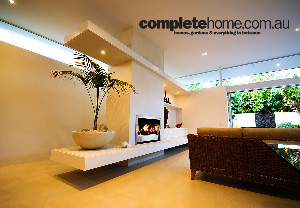Because of their very nature and the effect they have on the human eye, different colours can be used to great effect to create a range of effects and illusions. As we have seen, some colours are advancing, others cause features to recede, and still others are neutral and ideal when you want to play down the impact of strong contrasting hues. When skilfully employed, colour can make a room feel smaller, larger, longer, shorter, taller, brighter, or more intimate, and it can highlight or, alternatively, disguise architectural and other elements within the space.
The tricks and techniques of using colour to alter the spatial qualities of a room are related to how the human eye perceives different colours at different intensities. Colours appear to ‘look’ different in varying lights, against different backgrounds, and when combined with other colours. Hence the decorator can readily tap into this world of ‘colour perception’ to create a plethora of spatial effects without having to touch the structural elements of a room.
For instance, when used for walls, red — which is an advancing colour — will create the feeling that the walls are projecting forward, making the room feel smaller and intimate. Reds through to yellows are ‘hot’ colours and because they project themselves forward, they’re ideal to use as accents within a room and to highlight elements you want to draw attention to.
Conversely, blues, greens and tones thereof — especially light, pale versions — are classified cool colours and have a ‘receding’ effect on the eye. They will make the walls of a room appear as if they are ‘moving away’, achieving the feel of more space within the room.
To increase the feeling of space even more, paint the ceiling a lighter tone of the wall colour or an off white. To ‘close’ the room in and bring the ceiling down, a dark colour should be used. This is a useful hint for old homes with towering ceilings, where rooms might feel cold and vacuous.
For long corridors with tall walls which are typical of older and period homes, the trick to reduce the illusion of length and height is first to paint the tops of the walls a dark colour and a lighter version on the dado panel on the bottom section. To achieve a sense of height for short walls, work the combination of paint or paint and wallpaper colours in reverse. To make it feel wider, take the light colour all the way up the wall.
Painting the ceiling a dark colour will also help bring down the ceiling line. To then make the corridor feel shorter, paint the end wall a warm advancing colour or one with a deep hue such as navy. This will ‘draw’ the back wall into the space.
The same principles apply to overall rooms where you might want to change the perceived shape or dimensions. It can be simply done by using a combination of warm and cool colours in varying saturation — to bring walls and architectural elements forward and to encourage others to recede into the background. If you want to use just the one colour within a room, you can achieve the same results by using varying hues — from deep to light.
Once you’ve done all your hard work and carefully chosen your colours for optimum visual effect, always remember the furnishings and accessories you place in close proximity will attract attention. So if you don’t want a particular part of a room to be a focal point, don’t place vibrant, contrast furnishings close by and don’t clutter the walls with all manner of hanging prints and other decorative elements.






